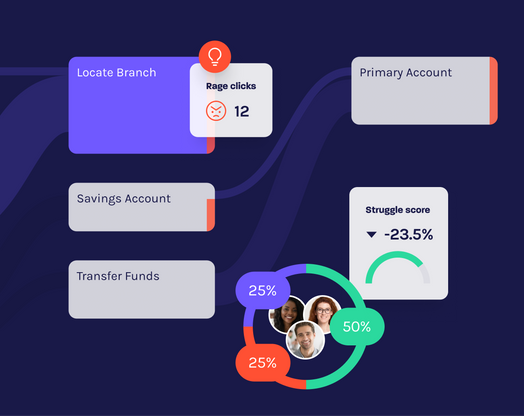
3 digital CX tips to remain competitive in ecommerce
Ecommerce has grown to over $2 trillion in sales worldwide since the first online order in 1995—a book ordered from Amazon. Today, over a third of retail business is conducted via online marketplaces like Amazon and Ebay. Many retailers have embraced these marketplaces to reach new buyers and remain relevant in the increasingly crowded ecommerce space.
But it’s not the right choice for every brand. Selling through Amazon and other online marketplaces means you don’t have access to valuable customer data. This digital customer data informs everything from product offerings and digital experiences to marketing strategy and promotions. For sales made on an online marketplace, brands are left with little control over the customer experience and without the means to remarket to these customers to secure return purchases.
More and more brands are removing their product lines from marketplaces and moving to a more direct online model. Even shoe retailer Nike, once the most-purchased clothing brand on Amazon, ended their relationship with the e-commerce giant to “focus on elevating consumer experiences through more direct, personal relationships.”
So how can retail brands compete with the likes of Amazon? By investing in digital CX.
Here are some ways you can invest in your web and mobile app customer experience to grow your ecommerce footprint.
1. Remove friction in digital journeys
Digital journeys must be fast and frictionless. Technical functionality on your website and mobile app should not be taken for granted. It’s clear that a smooth digital journey is vital for consumers when shopping online. In fact, in our recent survey, 83% of respondents said that a responsive online customer experience is important to their brand loyalty with 39% identifying it as crucial.
With so many options when shopping online, any bump in the road on a digital journey can result in abandonment. Our survey revealed that shoppers will abandon an online purchase due to slow loading times on a website (29%) or if there is a technical glitch (20%). And the same goes for mobile apps. Almost half (49%) of respondents believe that app crashes have a negative effect on their relationship with a brand with 24% likely to move to a competitor and 25% thinking less of the product following a crash.
These kinds of technical errors, like API calls or AJAX requests, aren’t always visible to the user. Having the ability to flag and fix technical issues quickly before they impact conversion rates too much is critical for competing in ecommerce. Reducing incident metrics like mean time to identify (MTTI) and mean time to resolve (MTTR) is key to success for any brand hoping to maximize revenues on digital channels.
2. Empower customer service
The second something goes wrong on your mobile app or website, your customers want to talk to a human, stat. Over 20% of calls to contact centers are due to issues on websites or mobile apps. Customers expect call center reps to have access to a full history of their past interactions and purchases. Yet, agents are often blind to what customers are doing on digital channels and why transactions on the website or mobile app fail. In fact, 60% of contact center agents say their companies don’t provide them with the right technology to address customer challenges.
Consider integrating digital experience analytics tools, including session replays, with your CRM so customer service reps can access customers’ online activities while on the call. It’s important for session recordings to be available historically as well as in real time so agents can resolve customer inquiries quickly, which will lead to lower average handle time (AHT) and higher first call resolution (FCR) rates.
With session recordings available from within a CRM like Salesforce, they’re shared easily. Often your contact center agents are your first line of defense when issues crop up. Ensure your agents can share session recordings with IT, marketing and product managers to address website and mobile app issues and improve the omnichannel customer experience.
3. Leverage digital journey maps
Companies that focus on the customer journey see a 50% greater return on marketing investments than those that don’t. Digital journey maps allow you to maximize customer acquisition and retention on your web and mobile app channels. Delve into journeys that end in a sale and compare them to those that don’t to optimize conversions. Slice and dice the map into segments for retargeting and remarketing campaigns.
Keep in mind that journey maps produced by web analytics solutions are based only on the events you’ve previously tagged. An automated digital journey mapping solution can capture everything—whether tagged or not—allowing you to make decisions based on all of your customers’ behavior, even if it’s not what you expect.
With 14 million Amazon Prime members in the U.S. alone, online marketplaces aren’t going anywhere any time soon. But retailers can take advantage of digital experience analytics solutions to up their CX game on their own websites and mobile apps. To learn more about digital customer journey mapping, check out Digital Customer Journey Mapping in Today’s World.








